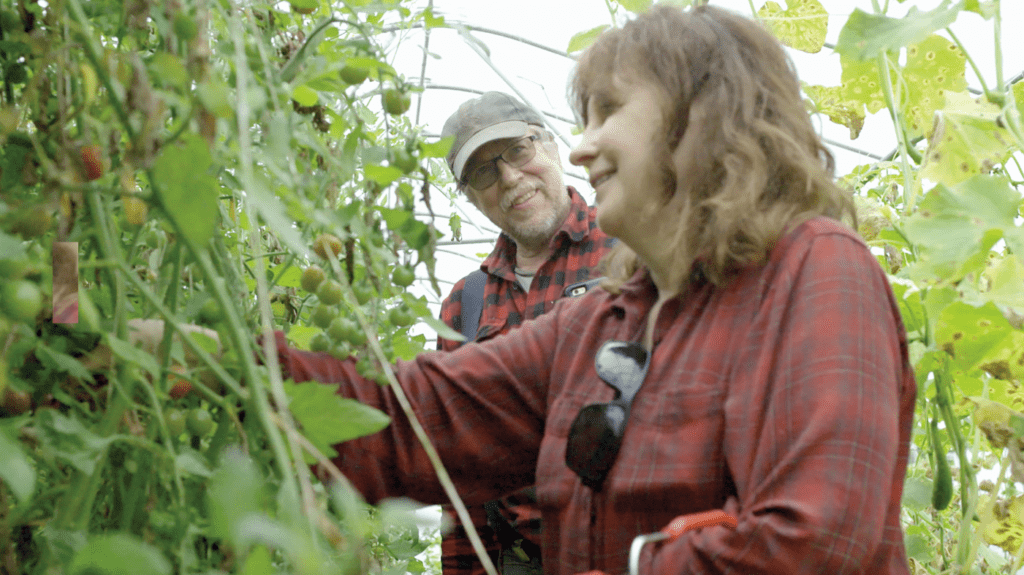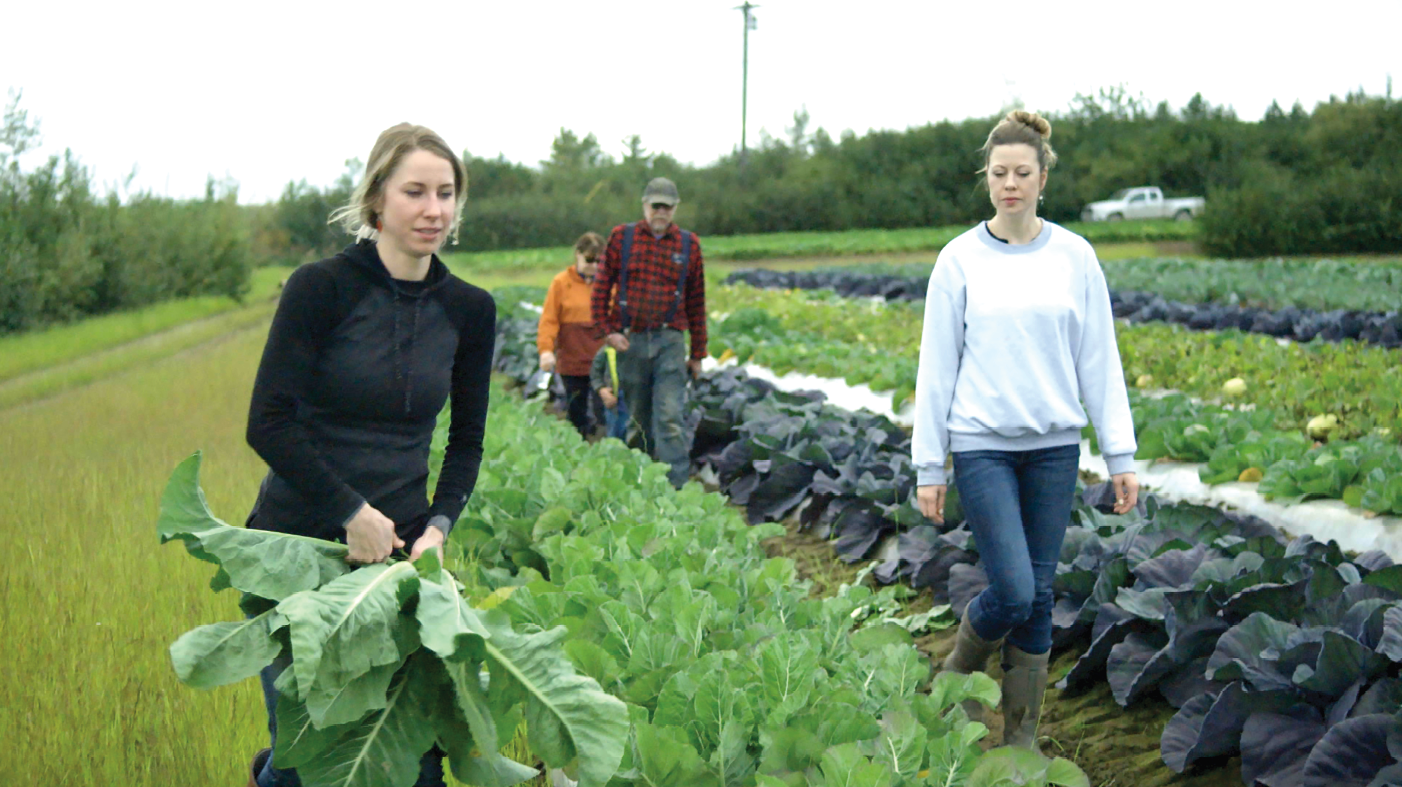

Jun 18, 2019Alaskan growers featured on History Channel’s ‘The American Farm’
No roads lead to Bethel, Alaska, but for months bush pilots will leave town with boxes full of fruit and vegetables for households in villages within a 150-mile radius.
Tim and Lisa Meyers have established a fruit and vegetable farm near the southwestern Alaska city, growing strawberries, raspberries, zucchini, cucumbers, turnips, carrots, tomatoes, radishes, potatoes, cauliflower and cabbage – “just about everything except for corn and soybeans,” Lisa said. They established the farm in 2002 and so far have cultivated eight or nine acres of their 17-acre lot, where permafrost is a short distance below the surface.
“It’s totally virgin ground,” Tim said. “There’s never ever been a farm here.”
Meyers Farm was featured this spring in a new television series that ran on Thursday nights from April-May on the History channel. The eight-part docuseries, called The American Farm, follows growers at family farms across the country. It comes from the creators of “Deadliest Catch” and “Storage Wars.”
Something different
The family farm was targeted for shooting the show pilot, Tim said.
Admittedly, their operation stands out from the others. While most of the five farmers featured in the series are primarily involved in grain, cattle and dairy operations, Meyers Farm grows fruit and vegetables.
It stands out in Alaska, too. There are some household gardens and subsistence farming that far north but almost no commercial farming, he said. Fresh produce is hard to find up north, and Meyers Farm is very practical.
“The way we’re doing this, on a small 10-, 20-acre farm, it’s very family doable,” he said. “We can grow 100,000-plus pounds of food. Our little family feeds a lot of people.” The farm has even planted an orchard of 13 apple trees, grafting Honeycrisp and Granny Smith onto crab apple rootstock and is waiting to see if they will grow.
Of course, specialty crops – fruits and vegetables – are a relatively small slice of American agribusiness. As Tim puts it, “the whole damn country’s growing high-fructose corn syrup and ethanol.”
“I don’t know why we need to have 20,000 acres under cultivation,” he said. “We’re growing food that you can really eat.”
And they do.
The subscription boxes of produce travel to households in 56 other rural villages in Alaska.
“We just think it’s a cool way to get people to eat better,” Lisa Meyers said.
Bethel, population 6,500, has many government jobs that are often filled by people from out of state, and fresh produce is a comfort of home that those applicants don’t have to give up.
“This is one of the main reasons they agreed to take a job up here,” Lisa Meyers said.
How they do it


They are growing 2-3 feet above permafrost, but it’s Alaska’s unpredictable weather that makes growing difficult for the Meyers.
“I started about 400 heads of cabbage this morning,” Tim Meyers said April 2.
“They’ll be up in two days, and we’ll put them out in the sun, and in two weeks they’ll be just about ready to put out.” Cruciferous vegetables like cabbage tolerate the cold very well.
Six high tunnels allow them to expand their season.
They will continue to plant through early June, with some rows planted in raised beds covered with black plastic to gather warmth.
“With the amount of sun we get in the spring, that ground just gets hot, and everything does really well,” he said.
At Bethel’s latitude, in April, the sunlight was at 13 hours a day, he said. It will peak in the middle of June at 21.5 hours a day.
During those long stretches in the sun, the tomatoes will grow as much as six inches per night, Lisa Meyers said.
“We have to tie them up every morning, otherwise they’ll fall over, they grow so fast,” she said.
While the farm does use some small amounts of chemical fertilizer, other artificial inputs are minimized. Animal, bug pests, and even weeds are minimized because they’re using virgin soil.
“We got nothing, not yet,” Tim Meyers said. “It’s ground that hasn’t been opened up – well, we’ve been growing on some of it for 10 years now – but we’re going to open up new ground this summer that’s probably been frozen for 7 million years and has never been grown on before, so there’s not a huge weed bank on any of this stuff.”
Lisa Meyers said there is some minimal weed pressure from chickweed. The farm is not registered organic, although they use very few synthetic inputs apart from fertilizer. She said it’s a sustainable farm and she hopes to apply later for a “naturally-grown” certification through the state.
Lights, camera …


The Meyers family isn’t sure they’ll be able to tune in – cable TV’s nearest availability is Anchorage, Alaska. And while they’ve seen some of the series’ upcoming video clips, they’re not sure which episodes they will be featured in.
The happenings weren’t planned or acted out – but a few things did happen during the 2018 tapings.
“It was a really unusual year last year,” he said.
An unexpected six inches of snow in mid-April buried freshly-planted onions. On another occasion, Tim’s homemade potato planter broke and the family – he, Lisa and their four daughters – had to continue planting by hand.
Tim Meyers said they weren’t paid for the appearances. Executive Producer Jeff Conroy said that farms are given some money to make up for their inconvenience of having a producer and cameraman on site, sometimes staying on the farm.
“They’re trying to produce a crop and we’re trying to produce a TV show, and there are times where those two (things) don’t line up,” he said.
Tim Meyers said the camera crew didn’t bother very much – his only complaint was that he had to sometimes wait for them before starting the morning’s work, and they slowed him down.
“It was really fun having them here,” he said. “I’d do it again.”
A second season of shooting
Cameras captured the family’s ups and downs over a season.
“The season went really well, from a growing perspective,” said Executive Producer Jeff Conroy. “There were certainly setbacks and equipment failures. I think the biggest challenge for them is figuring out their market. It’s one thing to grow amazing vegetables and fruit and all, but where are you going to get a market built up? In Alaska, for them, it’s a lot about shipping stuff in. To kind of break that system and that cycle and be growing that right there, essentially in the tundra – that’s the bigger challenge.”
The Meyer’s youngest daughter leads the effort to solve some of the distribution and business challenges, he said.
“As we’re going into the finale, they’ve had some setbacks in terms of distribution,” he said. “She’s the champion of her dad’s vegetables, and looking this as: ‘This is not a hobby, is a business. How do we expand and make it sustainable?’”
The television series finale, which aired in May, was titled “Never Give Up.”
“As fall draws to a close, the last harvests are do or die for these family businesses,” according to the finale teaser. “Farmers have put everything on the line to stay afloat, and set themselves up for the future, but will it be enough?”
Filming re-started at the farms this spring, Executive Producer Jeff Conroy said. The History Channel has not yet purchased a second season, but he’s hopeful of them doing so.
TV viewers seemed fascinated with the antics of farm animals, the gritty and surprising world of agriculture, and the complex personal dynamics of a family farm. Even viewers who thought they knew everything about agriculture found themselves drawn in, Conroy said.
“The reality of this world is a lot more gritty,” Conroy said. “The uncertainty of the farm is fascinating to me.”
– Stephen Kloosterman, associate editor














